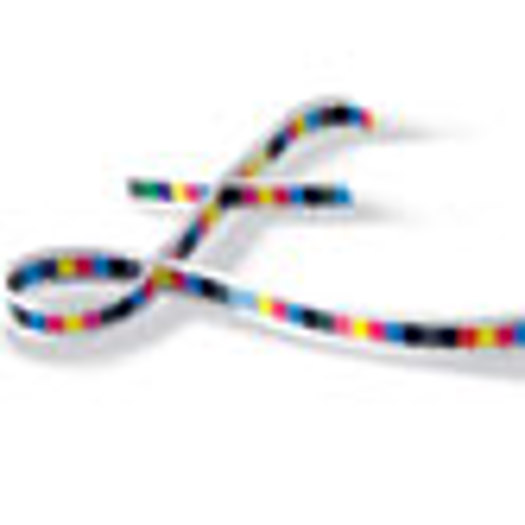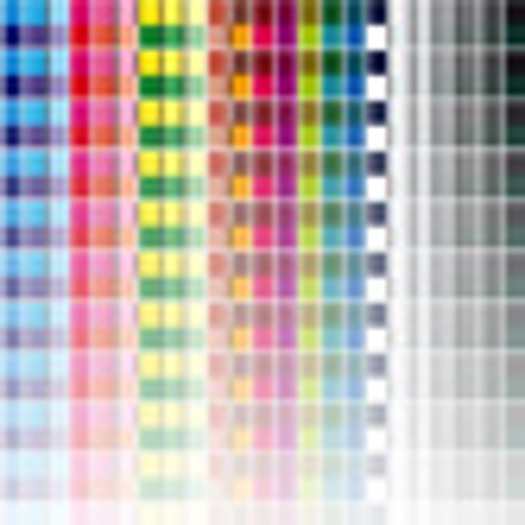Colour is one of the hottest topics in the print industry at the moment. Suppliers have been driven to come up with products that can satisfy clients' demands for accurate reproduction. But it's not just about getting the reds or the blacks spot on; consistency is the name of the game and if a print firm, big or small, can get that right then there are potential financial, energy and paper savings.
Take Potts Printers, for example. Brian Watson, print manager at the Northumberland-based firm, is emphatic in his praise for the way colour is managed on the firm's Manroland 700. It's the very latest in press technology, but what has really helped is the investment in Manroland's Color Pilot. It's an added extra, but Watson believes it has paid dividends.
"It takes the margin of error away from the operator - colour is now something we're not worried about as it's taken for granted," he says.
The knock-on effect is that makeready times have been halved and the company is no longer wasting around 500 sheets of paper as the press takes less time to get the colour levels perfect. "It has been a massive help," adds Watson. "It is saving us money and we haven't had a single customer complaint because of colour variation."
In the past, colour management was driven by the customers, who were understandably keen that their brands and publications were produced consistently. According to Paul Sherfield from the Missing Horse Consultancy, clients were taking over the pre-press functions from the printers. Small design companies and print firms were pressing ahead with their efforts to colour manage, but it was the advent of ISO 12647 that pushed the industry towards a more consistent approach.
The theory is that if companies go for this standard on their presses, and their clients work to it as well, it ought to result in far fewer colour problems - there's nothing like the threat of an expensive compensation claim to ensure that a printer gets it right. If a firm opts for an ISO 12647 process, it will render remote proofing more viable, saving both money and time, especially for magazine publishers as pages can be held open for longer, allowing for more ads to be sold.
"Printers were initially very sceptical of this standard back in 2002," explains Sherfield. "But then a couple of print firms went down that route and six months later the numbers grew. Effectively, the standard means that you are printing a standard file on the press. It means that you can cut around half an hour on makeready and hundreds of sheets."
"ISO 12647 sets the standards for how the mechanics should be set up," adds Niall Coady, managing director at Targetcolour. "If you are going to match the press then you need to calibrate it to a repeatable system."
Kit calibration
Controlling colour effectively starts with the monitors a company has, according to Sherfield. "It needs to be viewed on a properly calibrated colour screen and you won't get a good one for less than £800. This is all you have in the early stages. It's also an important consideration for anyone who is soft proofing."
As with the presses and proofing devices, a calibrated screen needs to have the appropriate ISO accreditation. "It means that you can proof within certain tolerances," says Sherfield. "If you hit the numbers then the whole workflow should work well together."
There are plenty of workflow products on the market that can give a company a start in colour consistency; Fuji's MFX, Kodak Printergy and GMG Colour Server to name just three. "Different workflows will have different capabilities," explains Sherfield. "There are ones out there with very good colour management ability."
Malcolm Mackenzie, operations director at Targetcolour, concurs that colour management can fully realise savings in time, paper and money.
"You really can double your savings, especially for the sheetfed guys. They have a lot of makereadies," he says.
Plumping for a versatile colour management product is also key. Targetcolour's MyPressXpert is one product that is designed to work with both web and sheetfed presses. The ISO 12647 standard is at the heart of the software package, which provides the tools to track the printed results and allows the user to identify any problems and rectify them. MyPressXpert's main selling point is that it offers an online, centrally hosted service that allows a user to call on the help of Targetcolour's experts for remote diagnostics.
"We aren't about just simply flogging software - we address the issues our clients are telling us," adds Coady.
And the good news is that this kind of service doesn't carry an excessive price tag. MyPressXpert costs £200 per month for sheetfed presses, £100 for coldset and £400 for heatset web presses. Meanwhile Bodoni's PressSign 2.5, which offers process control and press control with the ability to control ink keys across a press, comes in at around £1,500 with PressSign Pro around £1,000 more. Mellow Colour's Colour PrintSpec - one of the first tools on the market for measuring print performance - clocks in at just under £2,000. Heidelberg also has a product in this market: Prinect Colour Toolbox 3.5. This performs various functions including ICC profiling and colour trend analysis. It's priced at £4,000.
High-end options
That said there are products to suit a more generous budgets. Quadtech's Colour control System is a closed-loop system which uses SpectralCam sensors to hit target densities. The package costs a whopping £120,000. Costing considerably less is the Alwan CMYK Optimizer, distributed by Targetcolour - the Print and Print Gold packaging starts from £10,000 depending on configuration and consultancy. It's this type of product that can offer ink savings or ink optimisation and in turn help you to save money.
If you lay down less ink - savings can be in the region of 30% - then you will reduce your ink costs. There are other benefits from putting less ink down; less drying is needed, which saves energy in heatset web and allows for quicker finishing for sheetfed. There's also a benefit for digital printers, particularly in the inkjet process - ink is a particularly significant cost so as a result bigger savings can be achieved.
"We have clients like Communisis and Wyndeham Heron who are good examples of where real waste can be saved," adds Coady. "Around 3,000 waste sheets have come down to 1,000 and it's a demonstration of how colour management is saving clients one hell of a lot of money. At Wyndeham, we have seen 20% being shaved off makereadies. At Belmont Press, they have made great savings with ink consumption."
It is that final example that provides Coady with ammunition to counter the critics of ink optimisation. Belmont is a sheetfed printing company and some people argue that the benefits of ink optimisation in this area are marginal. Ink can be only a small percent of the total cost of a job and subsequently not such a big saving compared to a reduction in makeready time.
Also, Sherfield adds that if you push ink optimisation too far, you may not get enough ink down for products that require a glossy finish. "In my opinion, if you take it too far then you can muck up a job," he warns. "You could be placing a colour with too much black. It's an area that works well for newspaper printers, but saving 30% in ink isn't going to work for every printer."
There are so many different aspects to colour management and industry experts would be happy to debate the benefits and potential downsides all day long. Despite conflicting views one message comes through loud and clear: you need to have solid colour management systems in place if you wish to be a competitive and cost-effective operator. It's what clients demand and it can also mean big savings for your business.
Matchmakers: colour controls

Putting proper colour controls in place could deliver savings in a number of areas, finds Philip Chadwick









